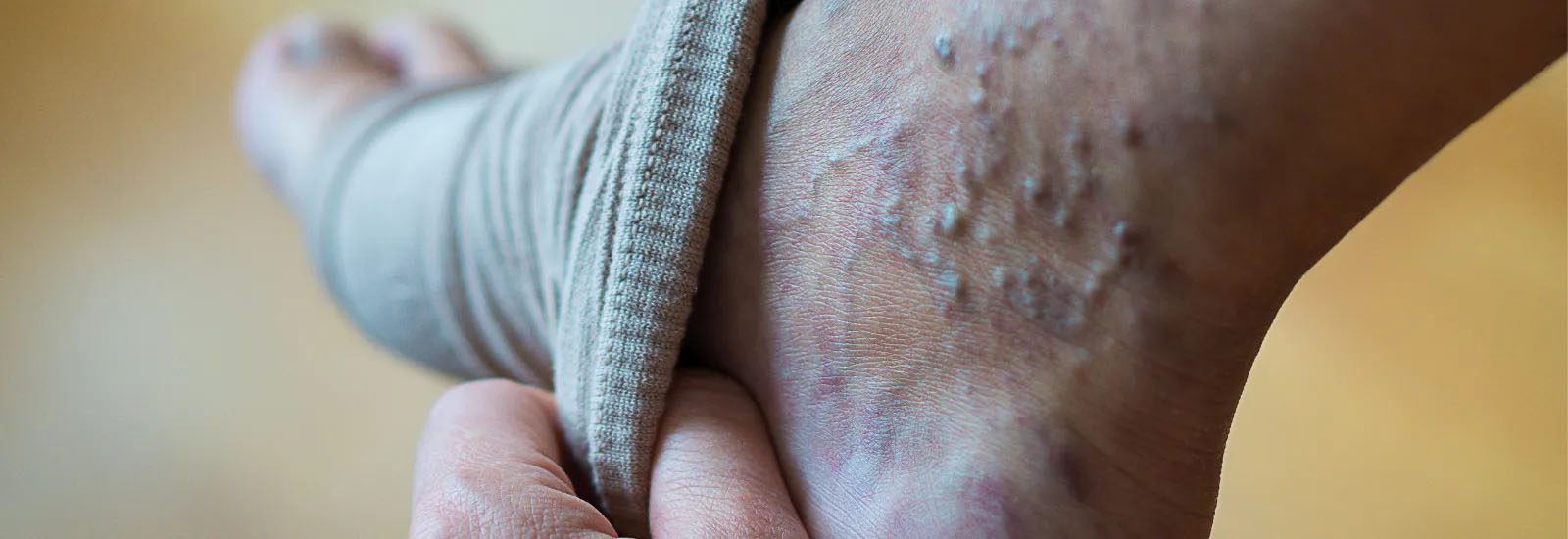Varicose Veins
Overview: Varicose veins are enlarged, twisted veins that often appear blue or dark purple and are commonly seen in the legs. They occur when the valves within the veins fail to function properly, leading to the pooling of blood and increased pressure in the veins.
Causes:
- Valve Dysfunction:
- Weak or damaged valves in the veins can result in the backflow of blood and the development of varicose veins.
- Heredity:
- A family history of varicose veins can increase the risk of developing the condition.
- Age:
- The risk of varicose veins increases with age as vein walls naturally lose elasticity.
- Gender:
- Women are more likely to develop varicose veins, especially during pregnancy and hormonal changes.
- Pregnancy:
- Increased pressure on the veins and hormonal changes during pregnancy can contribute to varicose veins.
- Obesity:
- Excess weight puts added pressure on the veins, increasing the risk of varicose veins.
- Prolonged Standing or Sitting:
- Occupations or activities that involve prolonged periods of standing or sitting can contribute to varicose veins.
Symptoms:
- Enlarged, Twisted Veins:
- Visible, bulging veins, often dark purple or blue in color.
- Aching or Throbbing Pain:
- Pain or discomfort, especially after standing for long periods.
- Heaviness or Fatigue:
- Feelings of heaviness, tiredness, or achiness in the legs.
- Swelling:
- Swelling, especially in the ankles and feet.
- Itching or Burning:
- Itching or burning sensations around the veins.
Diagnosis:
- Physical Examination:
- A healthcare provider may visually inspect the affected areas and assess symptoms.
- Doppler Ultrasound:
- Imaging test to visualize blood flow and assess the function of the veins.
Management:
- Compression Stockings:
- Graduated compression stockings help improve blood circulation and reduce symptoms.
- Elevating the Legs:
- Elevating the legs periodically can reduce swelling and alleviate symptoms.
- Regular Exercise:
- Engaging in activities that promote leg strength and circulation.
- Weight Management:
- Maintaining a healthy weight to reduce pressure on the veins.
- Avoiding Prolonged Sitting or Standing:
- Taking breaks and changing positions to prevent excessive pressure on the veins.
- Sclerotherapy:
- Injection of a solution into the veins to close them and redirect blood flow.
- Laser Therapy:
- Use of laser energy to close off smaller varicose veins.
- Endovenous Ablation:
- Minimally invasive procedures using heat or laser to close off larger veins.
Complications: Complications are rare but may include blood clots, skin ulcers, or chronic inflammation.
Prevention:
- Regular Exercise:
- Engaging in activities that promote overall cardiovascular health.
- Weight Management:
- Maintaining a healthy weight to reduce pressure on the veins.
- Leg Elevation:
- Elevating the legs when resting.
- Avoiding Prolonged Sitting or Standing:
Taking breaks and changing positions regularly.

